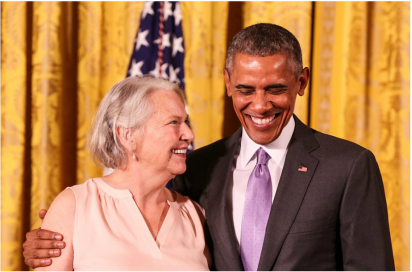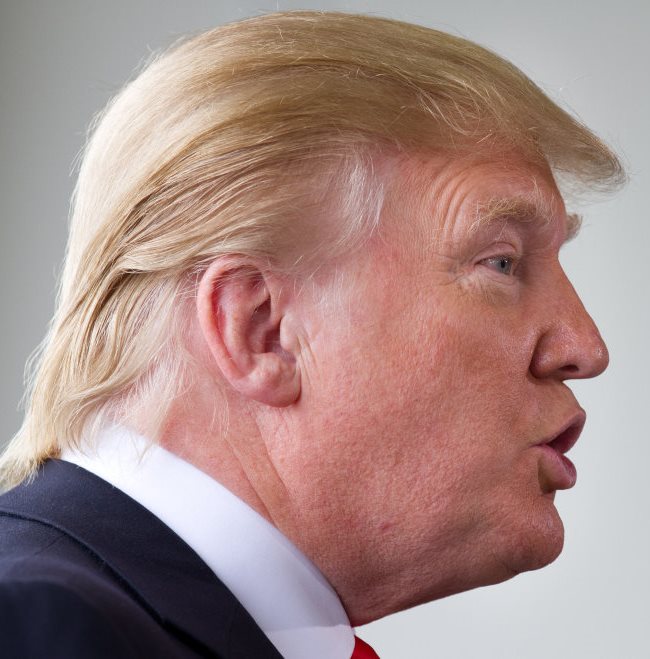|
You already know who the ridiculous is. So let’s start with the sublime. I was in the library the other day at the “New/Non-Fiction/14 Days Only” section. On a lower shelf, I spotted a book of essays by Annie Dillard, “The Abundance: Narrative Essays Old and New.” Somehow, I had gotten to be this old without ever reading anything by Dillard, so I picked up the book, and opened it in the middle, to a chapter entitled “The Weasel” “The weasel is wild. Who knows what he thinks? He sleeps in his underground den, his tail draped over his nose. Sometimes he lives in his den for two days without leaving.” Needless to say, I checked it out. The weasel essay, six pages long, includes a 60-second encounter in the woods when Dillard and a weasel locked eyes. The essay also includes the tale of an eagle that tried to carry off a weasel, and got more than it expected. The essay become an exhortation to grab life – whatever life is – with your jaws, and not let go. That is pretty much what Dillard does in her writing, and in her life, by her own testimony. In one section, "An American Childhood,” previously published, she races through her family and her church and her boyfriends and her life. Required reading for teen-agers. I was knocked out by the two final essays. One was about sand, and geology, and the Jesuit priest-paleontologist, Teilhard de Chardin, and love. The final chapter by Dillard, a convert to Catholicism, was alternating segments about what she called the modern "hootenany" Mass and doomed polar explorers who went off unprepared. It ends with a fantasy of the two themes overlapping. I am now a fan of Annie Dillard, maybe even a groupie. * * * The second book continues the furry, feral theme, considering the muskrat Donald Trump carries around on his head and in his head. The book is “The Making of Donald Trump,” by Pulitzer-Prize-winning David Cay Johnston, seen often on the Web and the tube, warning us, “The Trumpites are coming! The Trumpites are coming!” The book hit No. 15 on the Times best-seller list last week. Johnston is an investigative reporter, one of the best, and has been on the scent of Trump and the muskrat for decades. He has put together verifiable details of the way Trump does business – the Polish immigrants who tore down a landmark building at nights, without safety precautions or attention to artwork; the vendors who got stiffed by Trump, the garish casinos in Trump’s name without his having any knowledge of how gambling works, the threats, the suits, the welching, and the lies about women he never dated. Johnston’s book should be read – but won’t be -- by the fact-averse minority that considers Trump the great white hope. Weasels sí, muskrat head no.
Brian Savin
8/18/2016 09:48:28 am
With our daughter visiting, yesterday we went for a hike and picnic in the beautiful Hidden Valley Preserve and stopped into Washington Depot's Hickory Stick Bookshop to pick up a copy of: "The Nordic Theory of Everything" by Anu Partanen. The three of us skipped into chapters and subject references. It doesn't take long to feel utter disgust at our nation's lack of political leadership in meeting the most basic social needs we should be discussing and acting on. The problem begins in my mind with recognizing and castigating the failure -- indeed, lack of effort or seeming interest -- on the part of this current Administration. Partanen's broad yet quite specific critique is my choice for must reading by Americans this week.
George Vecsey
8/18/2016 12:54:54 pm
Brian, what about the Republicans who stalled everything for the past seven years? I see it as much about bigotry as disgraceful political maneuvering.
bruce
8/18/2016 11:45:53 am
el trumpo's messcapades have been pretty well documented for years.
George Vecsey
8/18/2016 12:58:32 pm
Bruce, Rob Ford was funnier and clumsier. Maybe it was whatever he was ingesting. I sometimes thought he was putting us on, but maybe not. I used to think Trump was a deadpan comic. Know him from his football days. But my sources in the Trump camp said, no, he isn't kidding, that is who he really is -- cannot process information, thinks only of himself. Just wonderful.
bruce
8/18/2016 01:41:06 pm
George, 8/20/2016 02:31:56 am
Here the homepage for hack any whatsapp account within a minute. Comments are closed.
|
Categories
All
|












